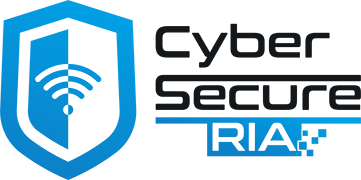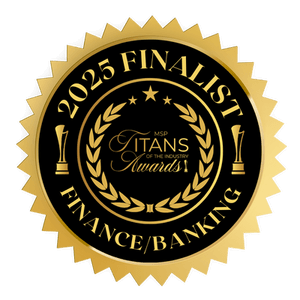Cybersecurity Training for RIA Employees: Building a Resilient Defense
At CyberSecureRIA, we build and run cybersecurity programs designed specifically for Registered Investment Advisers. For years, our team has helped RIAs secure their environments, pass exams, and keep operations running—combining practical controls with training that people actually remember and use. Because we focus exclusively on RIAs, we understand your custodians, workflows, vendor ecosystem, and RIA compliance requirements. That’s why our Security training programs for advisors, staff, and leadership come with audit-ready documentation, realistic simulations, and measurable outcomes—not just slide decks.
Why Cybersecurity Training is Crucial for RIAs
RIAs sit in a unique risk pocket: high-value client data, lean teams, and heavy reliance on cloud tools. A single successful phish can kick off wire fraud, account takeover, or a privacy incident. Add mounting regulatory expectations, and the case for Cybersecurity training for RIA employees is obvious. The right program reduces preventable incidents, shortens response times, and gives examiners proof that you’re investing in Employee cybersecurity education as an ongoing control—not a once-a-year checkbox.
Understanding the Threat Landscape for RIAs
Advisory firms are regular targets for credential theft, business email compromise, misdirected data, ransomware, and vendor-based breaches. Most events begin with human error: an email that looks legitimate, a link that wasn’t, an attachment opened in a hurry. Effective RIA cybersecurity training focuses on the realities your team faces daily—phishing and social engineering, weak passwords, oversharing in collaboration tools, risky remote access—and turns Employee cybersecurity awareness into instinct.
Key Components of Effective Cybersecurity Training
The best programs are short, specific, and practical. They cover what matters without drowning people in jargon, and they create habits that hold up under pressure.
- Password and authentication hygiene, including password managers, MFA, and recovery keys; Phishing awareness training with real examples of wire fraud, vendor spoofing, and consent-grant scams; Secure data handling for PII and client documents; Email, chat, and file-sharing etiquette; Remote work and device safeguards; How to report incidents quickly and without blame.
Tailoring Training Programs to RIA Roles
Training works when it’s relevant. Advisors need to recognize high-risk requests and use verification procedures with clients. Operations and client service teams need practical steps for handling sensitive data and validating money movement. Compliance teams need to understand documentation standards and escalation triggers. Executives need crisp playbooks for decision-making during incidents. IT or MSP partners need response coordination rules that fit your environment. We tailor Cybersecurity training modules by role so each group gets what they need—and nothing they don’t.
Regulatory Compliance and Training Requirements
Regulators expect more than technology; they expect people who know what to do. Regulatory cybersecurity standards that touch RIAs—such as safeguards under Regulation S‑P and identity theft red flags under Regulation S‑ID—assume your staff can spot and escalate issues. Well-structured Employee cybersecurity education supports your written policies, demonstrates control effectiveness, and provides the artifacts examiners ask for: annual plans, completion logs, phishing results, policy acknowledgments, and remediation records. In short, training is both a security control and a compliance control.
Implementing Continuous Learning and Assessment
Threats evolve; so should your program. Short quarterly refreshers, onboarding modules and targeted refresh sessions following real incidents keep knowledge current without overwhelming your calendar. Frequent touchpoints also create a steady stream of evidence that your program is active—useful for both risk management and audits.
Leveraging Technology for Interactive Training
People learn by doing. We use phishing simulations that mimic real attacker tactics, microlearning videos that take minutes (not hours), and scenario-based exercises tailored to your firm’s communication style. The result: practical Phishing prevention strategies that stick.
Measuring Training Effectiveness and ROI
Executives fund what they can measure. We build dashboards that make the impact obvious and help you iterate.
- Phishing metrics (click rate, report rate, time-to-report), training completion and test scores, reduction in policy violations, incident response times, number of “near-miss” reports submitted, and audit readiness indicators (attestations, logs, evidence packages).
Building a Security-First Culture in Your RIA Firm
Culture turns training into behavior. You get there by setting clear expectations, celebrating smart “report-and-verify” moments, and weaving security into daily routines—trading cutoffs, client calls, document handling, travel. When people see security helping them do better work—not slowing them down—habits stick. That’s the goal of RIA cybersecurity training: confident teams, fewer incidents, faster recovery when something slips through.
If you’re ready to level up Employee cybersecurity awareness with a program that’s built for RIAs—and proven to satisfy examiners—we can help. CyberSecureRIA designs Security training programs for advisors and staff that align with your tools, your vendors, and your policies, combining Phishing awareness training with practical workflows and evidence your firm can rely on.
Let’s turn training into a measurable advantage for your practice: https://www.cybersecureria.com/managed-it-services/









